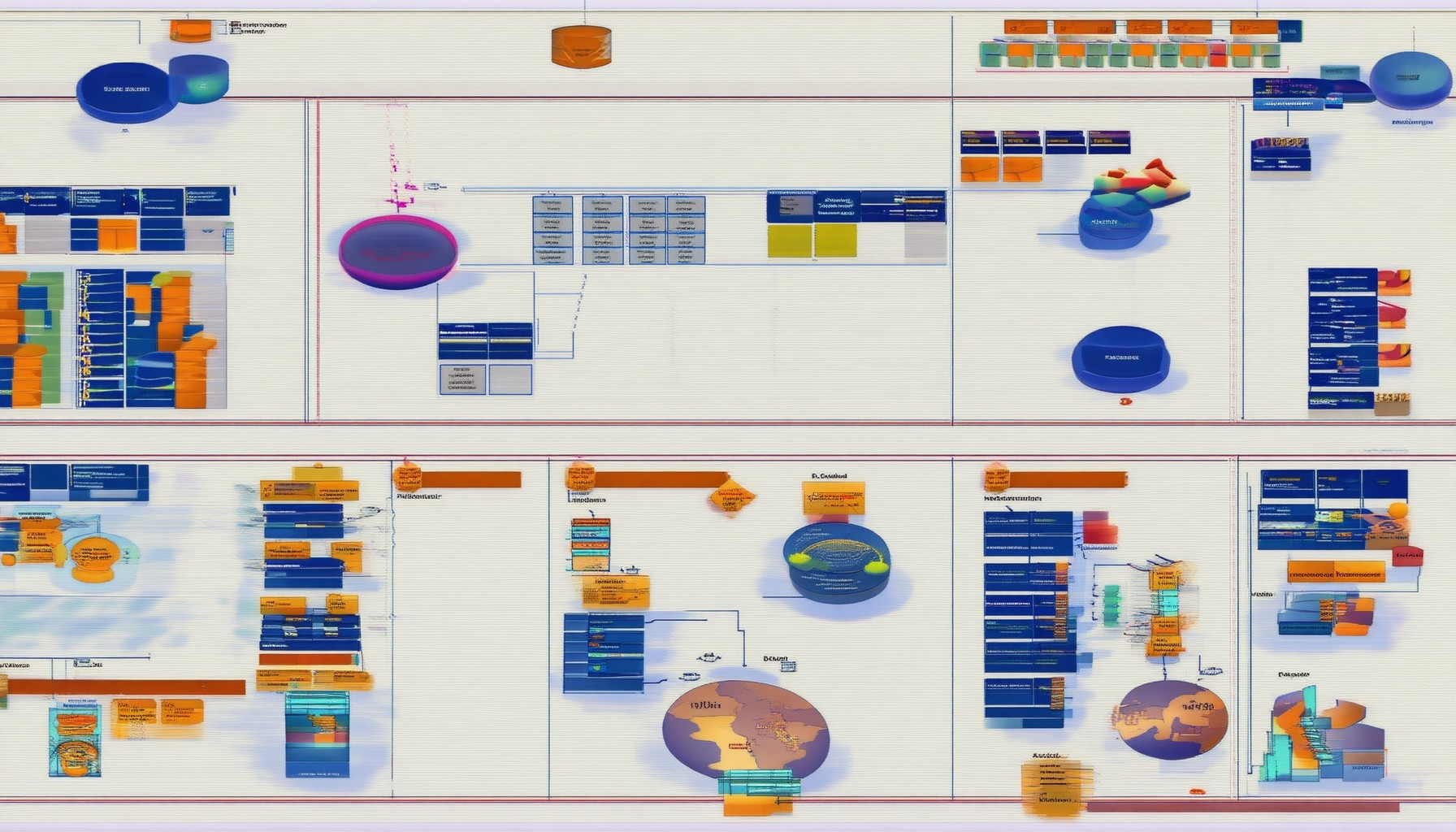Revenue diversification in NPOs is a critical strategy for achieving long-term financial stability and sustainability in the non-profit sector. As economic uncertainties and competition intensify, nonprofits are increasingly turning to diverse revenue streams to reduce reliance on traditional funding sources. This approach not only strengthens organizational resilience but also aligns with the evolving expectations of donors, stakeholders, and beneficiaries. By exploring innovative strategies, case studies, and proven practices, this article delves into how nonprofits can effectively implement revenue diversification to secure their future while continuing to serve their missions with excellence.
Top Strategies for Revenue Diversification in NPOs
– Diversify funding sources to reduce reliance on traditional income streams and enhance financial stability.
– Leverage fundraising events like galas and auctions to engage donors and boost visibility.
– Secure grants and awards from foundations and government agencies for sustained mission-aligned funding.
– Form corporate sponsorships with businesses to gain long-term support and brand alignment.
– Strengthen donor relationships through targeted campaigns and exclusive events to deepen loyalty.
– Implement membership programs for recurring revenue and a dedicated supporter base.
– Charge program fees for services like workshops to create a steady income stream.
– Launch social enterprise ventures such as thrift stores to generate profit supporting your mission.
– Pursue strategic partnerships with NPOs, businesses, and educational institutions for shared resources.
– Utilize online giving platforms and crowdfunding to engage supporters digitally.
– Optimize administrative efficiency through cost-saving measures and fiscal management.
– Develop multiple revenue channels by integrating diverse strategies for a robust financial model.
These strategies empower NPOs to build a resilient financial framework, ensuring sustained support for their missions.

Strategies for Implementing Revenue Diversification in NPOs
To effectively implement revenue diversification in nonprofit organizations (NPOs), it’s essential to adopt a multifaceted approach that aligns with organizational goals and market needs. Below are proven strategies that can help NPOs build sustainable financial models and maximize their impact:
1. Leverage Diverse Funding Sources
- Fundraising Events : Host well-organized events like marathons, auctions, or galas to engage donors and raise significant funds. These events often attract multiple sponsors and participants, diversifying your income streams.
- Grant Applications : Secure grants from foundations that align with your mission. Tailor each application to the funder’s priorities to increase approval chances. Utilize tools like GrantWatch for tracking opportunities.
- Corporate Sponsorships : Partner with businesses that share your values. Offer customized sponsorship packages that provide benefits beyond financial support, such as branding or volunteer opportunities. Platforms like CorporateSponsorships can help facilitate these partnerships.
2. Develop Program-Based Income Streams
- Fee-for-Service Programs : Offer workshops, training sessions, or consulting services to charge for your expertise. This creates a steady income stream while delivering value to participants.
- Social Enterprise Ventures : Launch initiatives like social enterprises or partnerships with for-profit entities. These ventures can generate revenue while addressing social issues, as seen with organizations like SocialEnterprise.Org .
3. Expand Digital Fundraising Channels
- Online Donations : Implement secure online donation systems to reach global audiences. Platforms like GiveGab facilitate easy donations and peer-to-peer fundraising.
- Crowdfunding Campaigns : Engage supporters through platforms like Kickstarter or Indiegogo to crowdfund specific projects. Share compelling stories and update backers regularly to maintain engagement.
- Membership Programs : Offer exclusive membership tiers that provide benefits like event access or discounts. Use tools like MemberPress to manage memberships efficiently.
4. Explore Partnerships and Collaborations
- Public-Private Partnerships (PPPs) : Form alliances with governments, corporations, or educational institutions to co-fund programs or initiatives. PPPs can provide substantial resources and credibility.
- Cause-Related Marketing : Partner with businesses to launch products or campaigns that donate a portion of proceeds to your NPO. Examples include Tom’s Shoes and their commitment to donating shoes to children in need.
5. Diversify Revenue Through Programming
- Ticket Sales : Host concerts, lectures, or workshops and sell tickets to offset costs. Use platforms like Eventbrite to manage ticket sales effectively.
- Product Sales : Create and sell merchandise or publications related to your cause. Online stores like Redbubble can help showcase your brand.
6. Strengthen Relationships with Major Donors
- Major Gift Development : Focus on cultivating relationships with high-net-worth individuals who can contribute significantly. Use donor relationship management tools like Blackbaa to track and nurture these connections.
- Legacy Giving : Encourage donors to include your NPO in their estate plans through legacy giving programs. Provide clear information on how to set this up, such as through LegacyGiving .
7. Optimize Administrative Efficiency
- Cost-Saving Measures : Implement cost-effective administrative practices to reduce overhead expenses. Consider outsourcing non-core functions or leveraging shared services to minimize operational costs.
- Funding Research : Invest in tools like Foundation Center to identify potential funders and tailor your approach accordingly.
By combining these strategies, NPOs can create a robust financial ecosystem that supports their missions while ensuring long-term sustainability. Regularly monitor and adjust these approaches based on organizational performance and market trends to maximize impact and efficiency.
Effective Strategies for Implementing Revenue Diversification in NPOs
Revenue diversification is a critical strategy for nonprofit organizations (NPOs) aiming to enhance financial stability and reduce dependency on a single funding source. Below are proven strategies to effectively implement revenue diversification in NPOs:
- Strengthen Donor Relationships
- Develop annual giving programs to encourage consistent contributions.
- Implement membership models that offer exclusive benefits to supporters.
- Utilize donor-advised funds to allow donors to contribute while retaining control over their donations.
- Expand Grant Funding Opportunities
- Identify and apply for grants from various foundations and government agencies.
- Participate in grant-matching programs to increase the impact of your applications.
- Consider professional grant writing services or workshops to improve your chances of securing grants.
- Leverage Program-Related Income (PRI)
- Integrate ticketing systems for events, auctions, and merchandise sales into your programs.
- Sell mission-related products or services as part of your program offerings.
- Partner with local businesses to co-host events or sell products aligned with your cause.
- Pursue Strategic Partnerships
- Collaborate with for-profit businesses to co-brand products, services, or campaigns.
- Form partnerships with other NPOs to share resources and co-fund initiatives.
- Seek sponsorships from corporate partners interested in aligning their brand with your mission.
- Explore Investment and Crowd-Sourcing Options
- Use crowd-sourcing platforms like Kickstarter or Indiegogo for specific project funding.
- Investigate micro-investment platforms that cater to small NPOs.
- Consider impact investing opportunities that align with your organizational goals.
- Establish Membership Programs
- Create tiered membership levels offering unique benefits such as exclusive content, event access, or early notification of opportunities.
- Engage members through regular communication and recognition to foster loyalty and retention.
- Use membership data to tailor marketing strategies and improve engagement outcomes.
- Implement Event Planning and Ticketing Systems
- Plan and execute themed events that align with your mission and attract passionate attendees.
- Use ticketing platforms to manage event registration, donations, and ticket sales efficiently.
- Offer premium tickets or VIP experiences to increase revenue per attendee.
- Cultivate a Strong Crowdfunding Community
- Launch targeted crowdfunding campaigns focused on specific projects or initiatives.
- Engage your network on social media platforms to promote your campaigns and encourage contributions.
- Offer incentives such as recognition, exclusive content, or event access to motivate contributors.
By implementing these strategies, NPOs can create a sustainable and diverse revenue stream that supports their mission and enhances long-term stability. Evaluate your organization’s current capabilities and priorities to determine which strategies align best with your goals, and continuously monitor and adjust your approach based on performance metrics and market trends.

How Does Revenue Diversification Help Nonprofit Organizations Achieve Financial Stability?
Revenue diversification plays a crucial role in ensuring the financial stability of nonprofit organizations. By expanding their funding sources, nonprofits can reduce reliance on a single donor base, enhance resilience against economic fluctuations, and create sustainable growth opportunities.
Key Benefits of Revenue Diversification for Nonprofits
- Reduced Dependency on Single Funding Sources
Relying on a single source of income leaves nonprofits vulnerable to changes in donor behavior or shifts in funding priorities. Diversifying revenue streams ensures consistent cash flow and mitigates financial risks. - Enhanced Resilience Against Economic Downturns
Economic uncertainties can impact individual donors or grantors. By diversifying income sources, nonprofits can withstand economic challenges and maintain operational continuity. - Increased Access to New Funding Opportunities
Expanding revenue streams opens doors to sponsorships, grants, and partnerships that may not be available through traditional fundraising methods. This broadens the nonprofit’s reach and potential impact. - Strengthened Relationships with Donors and Stakeholders
Demonstrating a diverse funding strategy shows transparency and responsibility to donors and stakeholders. This fosters trust and long-term support.
Strategies for Implementing Effective Revenue Diversification
To effectively implement revenue diversification, nonprofits should explore multiple strategies:
- Diversify Funding Sources : Seek contributions from individual donors, grants, corporate sponsors, and online donations.
- Develop Multiple Revenue Streams : Consider membership fees, ticket sales for events, and product sales.
- Leverage Partnerships : Collaborate with businesses or other organizations to co-sponsor programs or initiatives.
- Enhance Fundraising Efforts : Utilize targeted campaigns, donor cultivation strategies, and digital fundraising platforms.
By adopting these strategies, nonprofits can build a robust financial foundation, ensuring long-term sustainability and the ability to achieve their mission-driven goals.

Top Strategies for Implementing Revenue Diversification in NPOs
To effectively implement revenue diversification in nonprofit organizations (NPOs), several proven strategies can be employed to enhance financial stability and reduce reliance on traditional funding sources. Below are the most effective approaches:
- Diversify Funding Sources
- Fundraising Events : Organize marathons, galas, and auctions to engage donors and raise significant funds. These events can be themed around the organization’s mission to attract broader participation.
- Grants and Awards : Apply for grants from foundations and government agencies that align with the organization’s goals. Regularly monitor grant opportunities to maximize funding potential.
- Corporate Sponsorships : Partner with businesses that share the organization’s values to secure long-term sponsorship deals for events or programs.
- Strengthen Donor Relationships
- Donor Cultivation : Implement targeted campaigns to engage existing donors, including personalized letters, emails, and exclusive events. Regular updates and recognition of contributions can deepen donor loyalty.
- Membership Programs : Offer tiered membership levels that provide benefits such as event access, discounts, or exclusive content. This creates a recurring revenue stream and builds a loyal supporter base.
- Expand Earned Income Streams
- Program Fees : Charge fees for services rendered, such as workshop attendance, counseling sessions, or training programs. This adds a steady income source while delivering value to participants.
- Social Enterprise Ventures : Launch initiatives like thrift stores, cafes, or online marketplaces that support the organization’s mission while generating profit.
- Leverage Partnerships and Collaborations
- Strategic Alliances : Form partnerships with other nonprofits, businesses, or educational institutions to co-host events, share resources, or collaborate on joint fundraising efforts.
- Corporate Social Responsibility (CSR) Programs : Work with companies that want to contribute to social causes by offering volunteer opportunities, donations, or pro bono services.
- Develop Multiple Revenue Channels
- Online Giving Platforms : Utilize digital tools to facilitate easy donations, such as recurring contributions or one-time gifts through secure payment gateways.
- Crowdfunding Campaigns : Engage supporters via platforms like Kickstarter or GoFundMe to crowdfund specific projects or initiatives.
- Optimize Administrative Efficiency
- Cost-Saving Measures : Implement cost-effective practices in operations, such as outsourcing non-core functions or leveraging technology for better resource management.
- Fiscal Management : Maintain strict financial controls to ensure funds are allocated efficiently and transparently, building trust among stakeholders.
By combining these strategies, NPOs can create a robust ecosystem of revenue streams that provide sustained support for their missions while enhancing overall organizational resilience.
Effective Strategies for Implementing Revenue Diversification in NPOs
Revenue diversification is a critical strategy for nonprofit organizations (NPOs) aiming to enhance financial stability and reduce dependency on a single funding source. Below are proven strategies to effectively implement revenue diversification in NPOs:
- Strengthen Donor Relationships
- Develop annual giving programs to encourage consistent contributions.
- Implement membership models that offer exclusive benefits to supporters.
- Utilize donor-advised funds to allow donors to contribute while retaining control over their donations.
- Expand Grant Funding Opportunities
- Identify and apply for grants from various foundations and government agencies.
- Participate in grant-matching programs to increase the impact of your applications.
- Consider professional grant writing services or workshops to improve your chances of securing grants.
- Leverage Program-Related Income (PRI)
- Integrate ticketing systems for events, auctions, and merchandise sales into your programs.
- Sell mission-related products or services as part of your program offerings.
- Partner with local businesses to co-host events or sell products aligned with your cause.
- Pursue Strategic Partnerships
- Collaborate with for-profit businesses to co-brand products, services, or campaigns.
- Form partnerships with other NPOs to share resources and co-fund initiatives.
- Seek sponsorships from corporate partners interested in aligning their brand with your mission.
- Explore Investment and Crowd-Sourcing Options
- Use crowd-sourcing platforms like Kickstarter or Indiegogo for specific project funding.
- Investigate micro-investment platforms that cater to small NPOs.
- Consider impact investing opportunities that align with your organizational goals.
- Establish Membership Programs
- Create tiered membership levels offering unique benefits such as exclusive content, event access, or early notification of opportunities.
- Engage members through regular communication and recognition to foster loyalty and retention.
- Use membership data to tailor marketing strategies and improve engagement outcomes.
- Implement Event Planning and Ticketing Systems
- Plan and execute themed events that align with your mission and attract passionate attendees.
- Use ticketing platforms to manage event registration, donations, and ticket sales efficiently.
- Offer premium tickets or VIP experiences to increase revenue per attendee.
- Cultivate a Strong Crowdfunding Community
- Launch targeted crowdfunding campaigns focused on specific projects or initiatives.
- Engage your network on social media platforms to promote your campaigns and encourage contributions.
- Offer incentives such as recognition, exclusive content, or event access to motivate contributors.
By implementing these strategies, NPOs can create a sustainable and diverse revenue stream that supports their mission and enhances long-term stability. Evaluate your organization’s current capabilities and priorities to determine which strategies align best with your goals, and continuously monitor and adjust your approach based on performance metrics and market trends.

What Are the Primary Ways Nonprofit Organizations Can Achieve Revenue Diversification to Ensure Financial Stability?
To ensure financial stability, nonprofit organizations must adopt diverse revenue streams beyond traditional funding sources. Here are the key strategies:
- Diversified Fundraising Strategies
- Host various fundraising events such as galas, auctions, and marathons to engage donors and increase visibility.
- Utilize online platforms for donations, memberships, and recurring contributions to tap into digital giving trends.
- Grant Funding
- Apply for grants from foundations, government agencies, and corporations that align with the organization’s mission.
- Build relationships with grantmakers to secure consistent support and explore collaborative opportunities.
- Program Fees and Charges
- Offer fee-based services or products related to the organization’s programs.
- Charge for training sessions, workshops, or consulting services to generate additional income.
- Earned Income Strategies
- Launch social enterprises or ventures that generate profit while supporting the nonprofit’s goals.
- Partner with businesses for co-branded products or services to share risks and rewards.
- Membership Programs
- Create exclusive membership tiers offering unique benefits, such as event access or discounts.
- Use membership fees as a steady source of recurring revenue.
- Sponsorship and Partnerships
- Secure sponsorships from companies that share the nonprofit’s values or mission.
- Collaborate with businesses for joint marketing efforts or cause-related campaigns.
By implementing these strategies, nonprofits can reduce reliance on a single funding source and build a more resilient financial model. This approach not only enhances financial stability but also strengthens the organization’s ability to deliver its mission effectively.





0 Comments